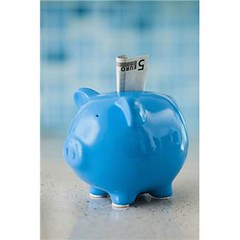Many Americans find saving money to be one of the most difficult challenges they have to deal with on a regular basis. Learning how to save money just isn´t widely taught in school, which means a lot of young adults struggle to come up with a basic savings routine. If more people understood how to take control of their finances, however, the national savings rate could really grow, and Americans could free themselves from the restraints financial institutions place upon them. Here are a few basic things you can do to work on setting up a good savings routine so you don´t get trapped by big financial institutions.
5. Set aside time to go over your finances. Depending on what kind of person you are, you may do this more or less frequently than other people. Some people may find it beneficial to go over their expenses at the end of every day, while other people may find that suffocating. Try to go over your monthly expenses at the beginning and end of every month, and try to go over your daily expenses at least once a week. After you see exactly where every penny of your money is going, set some realistic goals for ways you can cut down on your regular spending. If you have trouble keeping track of every expense, try using free budgeting tools such as the ones offered at Mint.com.
4. Make sure you pay your bills on time. One of the biggest expenses that many Americans face come in the form of additional fees and surcharges which banks, credit cards and other lenders charge customers who don´t pay their bills on time. If you constantly forget to pay your bills, then try to leave some reminder notes around your house or set up an automatic bill-pay system. The fees that companies charge customers who are late are outrageous, so make sure you don´t wind up paying thousands of dollars in extra fees every year.
3. Set up a direct deposit to a savings account. Many employers prefer that their employees use direct deposit systems, and many companies are willing to deposit money into more than one account. Ask your employer if they are willing to put part of your pay check into your checking account and another part into a savings account. That way, you won´t be tempted to spend all of your money more quickly than you should.
2. Make it difficult to withdraw money from your savings account. Keep your savings and checking accounts unconnected so you can´t easily access your savings account online or from an ATM. If you can only withdraw money from your savings account by talking to a bank teller, you´ll be much less likely to try to make unnecessary withdraws, even if you are tempted.
1. Reward yourself. When you start to see your savings growing, make sure you take some time to congratulate yourself and celebrate. That doesn´t mean, however, that you need to go out and spend a lot of money. Look for fun and exciting free events in your area so you can reward yourself without going through your savings or feeling guilty.
About the Author: Victoria Crowdell loves creating articles to help people with day-to-day life. She writes on a variety of subjects including DIY, fitness and credit control services, and wishes she was a bit better at practicing what she preaches on all three counts.










Comments on this entry are closed.